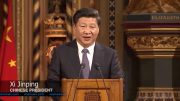A peak in global energy-related emissions could be achieved as early as 2020 and at no net economic cost, the International Energy Agency said in its new World Energy Outlook Special Report on Energy and Climate Change. The Agency showed how to achieve an early peak in emissions as one of four key pillars that it believes are needed to make the upcoming UN climate talks a success, from an energy perspective.
The IEA proposes that the following four key pillars are needed to make COP21 a success, from an energy perspective:
1. Peak in emissions – set the conditions to achieve an early peak in globalenergy-related emissions.
2. Five-year revision – review national climate targets regularly, to test the scope to raise ambition.
3. Lock in the vision – translate the world’s climate goal into a collective long-term emissions goal.
4. Track the transition – establish a process for tracking achievements in the energy sector.
“Any climate agreement reached at COP21 must have the energy sector at its core or risk being judged a failure,” said IEA Chief Economist Fatih Birol. “Climate pledges submitted for COP21 are an important first step to meeting our climate goal, and our report shows that they will have a material impact on future energy trends.”
Collectively, countries accounting for around two-thirds of global energy-related emissions have either formally submitted their climate pledges for COP21 (known as “Intended Nationally Determined Contributions [INDCs]”) or have signalled their possible content (such as China). A first assessment reveals these pledges will have a positive impact on future energy trends, but fall short of the major course correction required to meet the 2 °C goal.
The assessment of the INDCs shows that the growth in global energy-related emissions slows but does not peak by 2030. The link between economic growth and emissions weakens significantly, but is not broken: the economy grows by 88% from 2013 to 2030 and energy-related carbon dioxide emissions by 8%. Renewables are the leading source of electricity by 2030, but inefficient coal-fired power generation capacity declines only slightly. Such findings underline the need for ambitious national pledges for COP21 that can act as a solid base upon which to build stronger action, such as those enabled by a transfer of resources (technology or finance).
The World Energy Outlook Special Report on Energy and Climate Change is available for free download here.






Be the first to comment on "IEA’s four pillars to make COP21 a success"